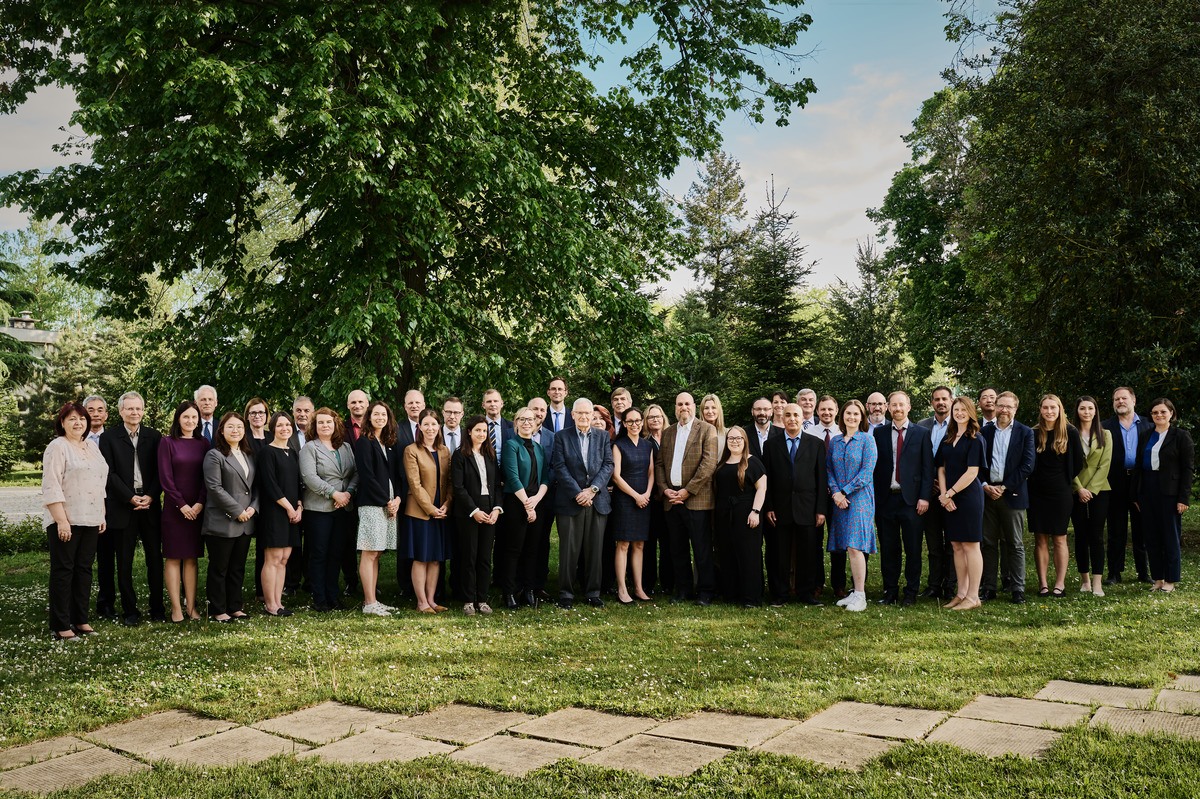Statement from Lisa E. Gordon-Hagerty, Under Secretary for Nuclear Security of the U.S. Department of Energy and Administrator of the National Nuclear Security Administration on the work of the IPNDV
 I hope this message finds everybody safe and healthy. I regret that the necessary precautions to fight the COVID-19 pandemic meant that we were unable to meet in person to celebrate the IPNDV’s accomplishments and share ideas for moving forward with this important initiative. Ironically, the IPNDV provides an example of how nations can successfully pool resources and expertise towards addressing a common problem, and I am confident that this type of cooperation will enable us to overcome the threat posed by the pandemic.
I hope this message finds everybody safe and healthy. I regret that the necessary precautions to fight the COVID-19 pandemic meant that we were unable to meet in person to celebrate the IPNDV’s accomplishments and share ideas for moving forward with this important initiative. Ironically, the IPNDV provides an example of how nations can successfully pool resources and expertise towards addressing a common problem, and I am confident that this type of cooperation will enable us to overcome the threat posed by the pandemic.
Although some challenging days may still lay ahead, I remain optimistic that we will be able to come together again soon.
As we wait for that day to arrive, the important work of nuclear disarmament verification must proceed, and it is an honor to provide this statement on behalf of the United States regarding the International Partnership for Nuclear Disarmament Verification. I’d like to thank all of the IPNDV partners, the U.S. Department of State, and the Nuclear Threat Initiative for all of your dedication and hard work in coordinating this initiative and commend you on the beginning of Phase III of the Partnership.
It is encouraging to see that, despite the turbulent times in which we are living, there is still a strong desire to seek further understanding of the complex challenges involved in the verification of nuclear disarmament and to identify potential solutions to those challenges. I’d like to briefly focus on three things in this statement:
- The importance of nuclear disarmament verification in a challenging international environment;
- The benefits of collaboration, both to the National Nuclear Security Administration and between nuclear and non- nuclear weapons states; and
- The future of the IPNDV as it moves into Phase III of its work.
The Importance of Disarmament Verification
With regard to my first point about the importance of disarmament verification, when I say “turbulent times,” in addition to the current pandemic, I’m referring to the current pessimism that seems to pervade analysis of the international arms control regime. A recent article in Foreign Affairs asked: “Is a New Nuclear Age Upon Us?” A week later, a headline in The Atlantic definitively declared: “A New Nuclear Era Is Coming.” In August, again in Foreign Affairs, another article gloomily proclaimed: “The Return of Doomsday.”
While I may not agree with all of the arguments laid out in these articles, I think we all agree that arms control measures can provide improved predictability and increased transparency, constrain certain destabilizing weapons, and enhance stability.
Hence, the United States is committed to arms control efforts that advance U.S., allied, and partner security – and efforts that include partners that comply responsibly with their obligations. This is why the Trump administration is committed to supporting the Nuclear Non-Proliferation Treaty as we celebrate the 50th anniversary of this Treaty this year.
The key to negotiating and implementing successful arms control agreements, however, is ensuring that they are verifiable and enforceable.
This is why the U.S. Department of State, in partnership with the Nuclear Threat Initiative, established the IPNDV more than five years ago. If verification is a necessary precursor to any effective future nuclear disarmament agreement, then collaboration between nuclear weapons states and non-nuclear weapons states is vital to building the capacity needed to develop and implement effective verification. This is especially true given that attaining the disarmament objectives we seek to achieve likely will require some of the most intrusive monitoring and verification challenges ever encountered to date.
The U.S. Government firmly believes the IPNDV can help to identify the key challenges likely to accompany such future agreements. Indeed, the importance of the Partnership’s mission was clearly expressed in the 2018 U.S. Nuclear Posture Review, which stated unequivocally: “The United States remains committed to finding long-term solutions to the technical challenges of verifying nuclear reductions, and therefore will explore new concepts and approaches for this goal, including continued support for the International Partnership for Nuclear Disarmament Verification.”
Thus far, I think our investment in the Partnership is bearing fruit.
Throughout the two phases of the Partnership’s work, dozens of experts from partner countries have developed more than 50 reports, papers, and technical assessments. These products are vital to the efforts to develop verification mechanisms for future nuclear disarmament, and help to create a common language, trust, and understanding in a spirit of collaboration between possessor and non-possessor states.
Moreover, the collaborative nature of the IPNDV has created an atmosphere in which government experts can come together, forgo the formalities of prepared statements and talking points, and conduct the hard work that is “blue collar diplomacy.” As we saw in Phase II with the Franco-German NuDiVe exercise, the Partnership’s planning and execution of exercises and demonstrations can stimulate new ideas and understandings.
NNSA, the IPNDV, and the Benefits of Collaboration
As to my second point, highlighting the benefits of collaboration, let me begin by taking a step back to address a basic question: Where does my organization, the National Nuclear Security Administration, fit into all of this?
For those of you who may not be familiar with NNSA, we were established by Congress in 2000, with three enduring missions:
- Ensuring the safety, security, and effectiveness of the U.S. nuclear weapons stockpile;
- Reducing the threat of nuclear proliferation and nuclear terrorism around the world; and
- Providing nuclear propulsion for the U.S. Navy’s fleet of aircraft carriers and submarines.
Although we are celebrating our 20th anniversary, NNSA’s heritage can be traced back to the Manhattan Project and the Atomic Energy Commission. While maintaining a safe, secure, and effective deterrent is NNSA’s mainstay, we are the inheritors of a long tradition of developing technology for arms control monitoring and verification, and maintain a significant program for research, development, testing, and evaluation.
Together with our partner national security laboratories, plants, and sites, NNSA possesses unparalleled scientific and technical expertise that plays a vitally important role in confirming treaty compliance and, in other cases, denuclearization. To borrow a line from the director of Los Alamos National Laboratory, Dr. Thom Mason, sometimes “only a weapons lab can recognize a weapons lab.”
NNSA research focuses on developing and assessing capabilities that balance potential verification requirements with operational and security considerations, while engaging with outside partners from both nuclear weapons and non-nuclear weapon states to benefit from their experience and perspectives. Moreover, NNSA has supported the Partnership since its inception. In Phase I, an NNSA expert co-chaired the Technical Challenges and Solutions Working Group, and in Phase II that same expert co-chaired the Technologies for Verification Working Group. Both working groups investigated technologies, methods, and procedures that could be used for specific technical challenges in the nuclear dismantlement process.
The United States and the technical experts at NNSA laboratories, plants, and sites are fully supportive of continuing these activities during Phase III of the Partnership. The IPNDV continues to demonstrate that collaboration between States with and without nuclear weapons can lead to real, tangible progress in the field of nuclear disarmament verification.
As a technical agency, we understand that this collaboration is critical to future success for several reasons. First, it allows us to build on our domestic research and development efforts.
Second, this collaboration produces a deeper consideration of a broader range of potential perspectives, verification objectives, and solutions to complex disarmament problems.
Third, these collaborations have been instrumental in advancing research and fostering new, creative thinking about technology development that the Partners have undertaken outside of the IPNDV.
For example, the idea for the Portal Monitor for Authentication and Certification, was a result of lessons learned through a U.S.-UK exercise. This joint exercise highlighted the challenges associated with the use of technology for nuclear verification. Specifically, it furthered our understanding of how easy or challenging it can be to certify a technology for use in a nuclear facility, and how easy it is to deploy, while balancing the need for information protection.
Inspired by the exercise, U.S. and UK experts had a vision for modular, easy-to-deploy radiation detection equipment with simple electronics that would protect sensitive information. Five-and- a-half years later, in 2019, a joint U.S.-UK team demonstrated the PMAC at the Pantex Plant.
Of course, no single technology, or group of technologies, will ever be the “silver bullet” for verifiable warhead dismantlement. We must continue to think creatively and realistically about how technologies could be deployed as part of future nuclear disarmament activities.
Phase III and the IPNDV
The third area I want to highlight is the IPNDV’s future as the Partnership moves into Phase III. The hands-on activities, practical exercises, and technology demonstrations will continue to inspire creative thinking and new ways to look at enduring problems.
The diverse group within the Partnership incorporates a broader range of potential perspectives, verification objectives, and solutions to solve complex disarmament problems. The United States recognizes that non-nuclear weapon states have significant expertise and experience to help tackle technical challenges with nuclear disarmament verification, including expertise in nuclear physics, nuclear energy facilities, IAEA inspections, and monitoring and verification in non-nuclear contexts, such as the Chemical Weapons Convention.
Complex technical challenges remain, and states without nuclear weapons can help resolve these through the advanced technical capabilities you offer, drawing from a range of technical expertise and industry. Partnerships like the IPNDV provide the right forum for excellent collaboration, and I encourage continued participation and leadership in these endeavors.
It is also critical to future collaborative verification work that states without nuclear weapons develop as strong an understanding as possible of the balance that states with nuclear weapons must maintain to provide the appropriate confidence building information on the one hand, while guarding against proliferation and assuring information security on the other, all while adhering to our Nuclear Non-Proliferation Treaty commitments.
Over the course of Phase III, the Partnership should seek to complement other nuclear disarmament verification initiatives, such as the Quad Nuclear Verification Partnership and the U.S.-UK verification initiatives, future United Nations groups, such as the Group of Governmental Experts on Nuclear Disarmament Verification, and the Creating an Environment for Nuclear Disarmament initiative.
Not only can the Partnership supplement the important work of these other initiatives, but partner states can engage other non-traditional stakeholders – for example, NGOs and universities – to take on the challenge of monitoring nuclear disarmament verification.
The United States, through NNSA, will continue to support this important work so we have the best tools and techniques available to enable verifiable arms control when future security conditions permit.
Conclusion
As I conclude, I acknowledge the prospect that, despite the aspiration of a world without nuclear weapons, we must take the world as it is, not as we wish it were. This is why I firmly believe there is no contradiction between the desire to reduce the number of nuclear weapons with continuing efforts to strengthen America’s nuclear deterrent. For 75 years, the effectiveness and credibility of America’s nuclear weapons capability has reassured friends and allies; contributed to international stability during the Cold War; and kept Americans safe from nuclear attack.
Since the end of the Cold War, the United States has led the world in reducing our nuclear stockpile while increasing transparency. While we reduced the number and types of nuclear weapons in our arsenal, other countries chose a different course and continued to modernize and expand their strategic capabilities. That is also why the United States must develop capabilities to deny potential adversaries any mistaken confidence that limited nuclear employment can provide a useful advantage over the United States and our allies.
The NNSA’s weapons modernization programs do not seek parity with other countries’ arsenals, or to start a new arms race. Instead, we are pursuing a qualitative and comprehensive approach towards maintaining a viable deterrent for the future at a time of increasing, and increasingly diverse, threats. Failure to meet our vital mission objectives will erode confidence in the security that the U.S. nuclear umbrella provides and increase the likelihood of conflict.
If we are ever to achieve the ideal of a world without nuclear weapons, or perhaps more realistically, to reinvigorate momentum toward achieving a world with fewer nuclear weapons, it must begin with producing tangible solutions to the technical challenges of verifying nuclear reductions. This is why the United States fully supports the work of the Partnership, and we look forward to applying our expertise in the serious, substantive work of the Partnership as it addresses challenges to future nuclear disarmament verification.
Once again, thank you all for your commitment to this important mission.





